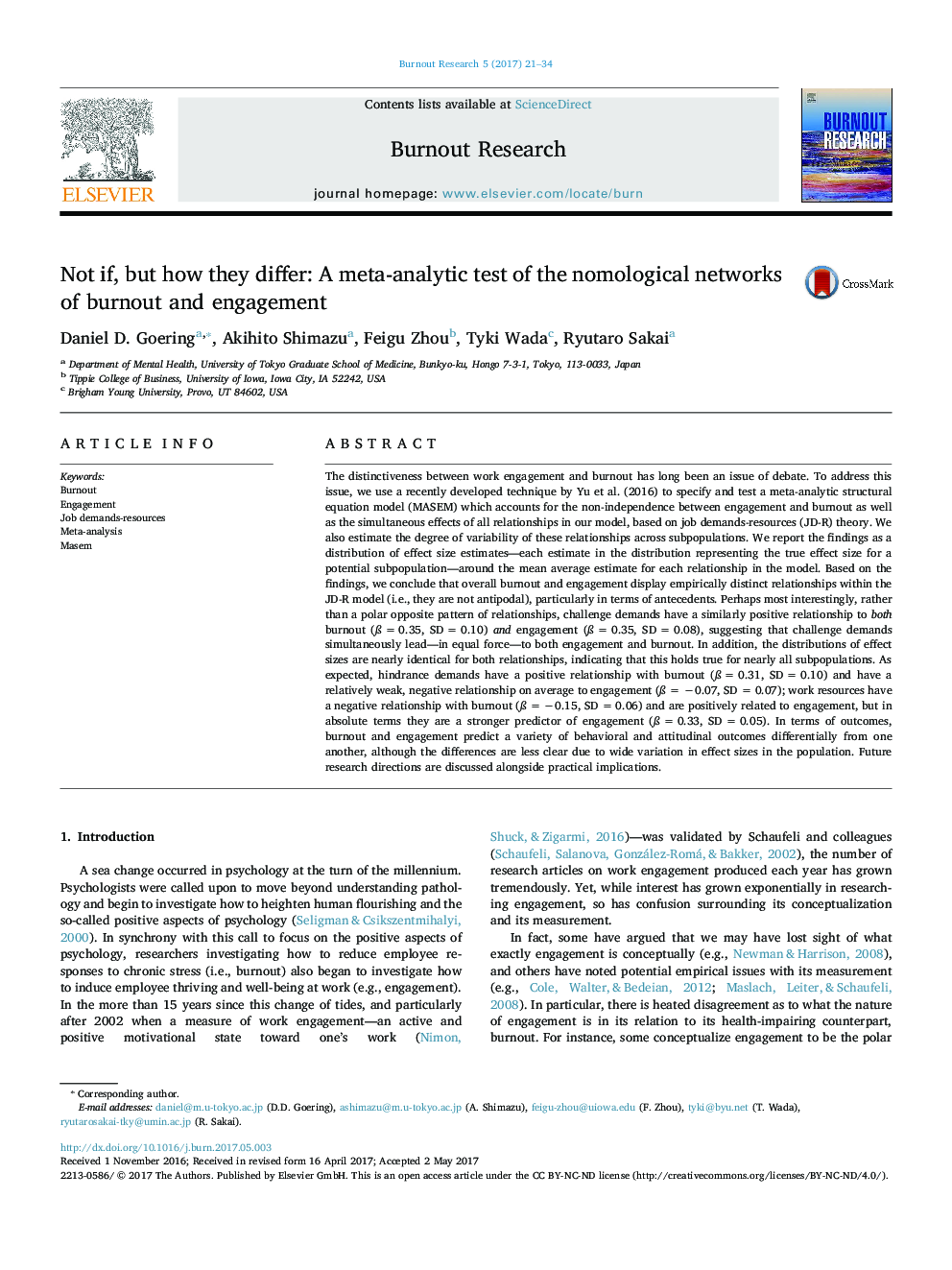| Article ID | Journal | Published Year | Pages | File Type |
|---|---|---|---|---|
| 4930039 | Burnout Research | 2017 | 14 Pages |
â¢Burnout and engagement are distinct constructs, moderately and negatively related.â¢They also have distinct nomological networks: unique antecedents and outcomes.â¢Challenge demands lead in equal force to both burnout and engagement.â¢Practitioners should use distinct interventions to both treat burnout and promote engagement.â¢There is significant moderation in outcomes, to be explored for future research.
The distinctiveness between work engagement and burnout has long been an issue of debate. To address this issue, we use a recently developed technique by Yu et al. (2016) to specify and test a meta-analytic structural equation model (MASEM) which accounts for the non-independence between engagement and burnout as well as the simultaneous effects of all relationships in our model, based on job demands-resources (JD-R) theory. We also estimate the degree of variability of these relationships across subpopulations. We report the findings as a distribution of effect size estimates-each estimate in the distribution representing the true effect size for a potential subpopulation-around the mean average estimate for each relationship in the model. Based on the findings, we conclude that overall burnout and engagement display empirically distinct relationships within the JD-R model (i.e., they are not antipodal), particularly in terms of antecedents. Perhaps most interestingly, rather than a polar opposite pattern of relationships, challenge demands have a similarly positive relationship to both burnout (ÃÂ =Â 0.35, SDÂ =Â 0.10) and engagement (ÃÂ =Â 0.35, SDÂ =Â 0.08), suggesting that challenge demands simultaneously lead-in equal force-to both engagement and burnout. In addition, the distributions of effect sizes are nearly identical for both relationships. As expected, hindrance demands have a positive relationship with burnout (ÃÂ =Â 0.31, SDÂ =Â 0.10) and have a relatively weak, negative relationship on average to engagement (ÃÂ =Â â0.07, SDÂ =Â 0.07); work resources have a negative relationship with burnout (ÃÂ =Â â0.15, SDÂ =Â 0.06) and are positively related to engagement, but in absolute terms they are a stronger predictor of engagement (ÃÂ =Â 0.33, SDÂ =Â 0.05). In terms of outcomes, burnout and engagement predict a variety of behavioral and attitudinal outcomes differentially from one another, although the differences are less clear due to wide variation in effect sizes in the population. Future research directions are discussed alongside practical implications.
